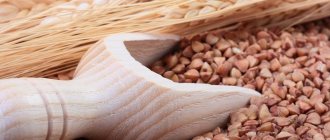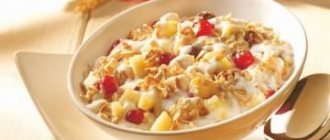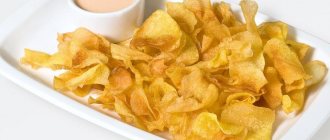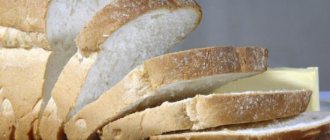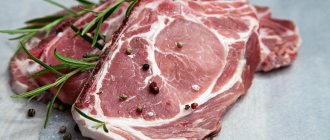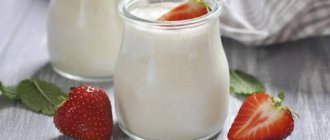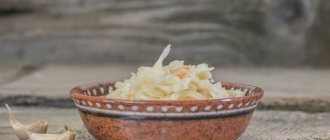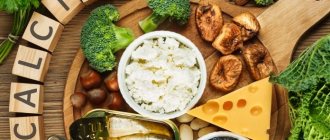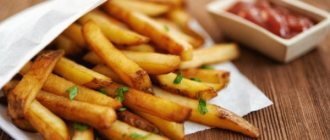Calorie table for porridges from various cereals
Cereals are the oldest food product that has been present in the human diet for more than 10 thousand years.
Our ancestors were actively involved in their cultivation, as they knew about their beneficial properties. The popularity of cereals and grain crops is due to the rich nutrients they contain. More than 70% of most cereals are carbohydrates, a natural source of energy. They also contain fiber and a complex of minerals that ensure the normal functioning of the human body. Cereals are ground into flour for baking, jelly is boiled and porridges and side dishes are prepared for meat dishes. WEIGHT LOSS STORIES OF STARS!
Irina Pegova shocked everyone with her weight loss recipe: “I lost 27 kg and continue to lose weight, I just brew it at night. » Read more >>
Table of calories and nutrients in 100 grams of dry cereals.
| Cereal name | Proteins, g | Fats, g | Carbohydrates, g | Calorie content, kcal |
| Rice | 6,9 | 1,5 | 71 | 329 |
| Manna | 10,7 | 0,9 | 70 | 333 |
| Buckwheat | 12 | 3 | 61,8 | 321 |
| Wheat | 15 | 3 | 64 | 318 |
| Millet | 11,6 | 3,3 | 61 | 348 |
| Oatmeal | 11,3 | 5,7 | 58 | 316 |
| Hercules | 12,03 | 6,02 | 62 | 340 |
| Barley | 9,5 | 1,2 | 64 | 312 |
The table shows the energy and nutritional value (BJU) of cooked cereals without adding sugar, salt and butter.
| Cereal name | Method of preparing porridge | Squirrels | Fats | Carbohydrates | Calorie content |
| Rice | On the water | 1,6 | 0,1 | 17,4 | 80 |
| With milk | 2,7 | 3 | 16 | 101 | |
| Manna | On the water | 2,6 | 0,2 | 16,3 | 82 |
| With milk | 3,4 | 3,5 | 15,2 | 110 | |
| Buckwheat | On the water | 4,2 | 1,3 | 21 | 108 |
| With milk | 5,6 | 3 | 28 | 113 | |
| Wheat | On the water | 3,5 | 0,8 | 21,2 | 107 |
| With milk | 4 | 4 | 19,8 | 137 | |
| Millet | On the water | 3,2 | 0,7 | 19 | 105 |
| With milk | 4,3 | 4,4 | 16,3 | 123 | |
| Oatmeal | On the water | 3,2 | 2,1 | 16,5 | 99 |
| With milk | 3,8 | 4,3 | 16,2 | 114 | |
| Hercules | On the water | 2,9 | 2 | 15,9 | 98 |
| With milk | 1,6 | 3 | 12 | 111 | |
| Barley | On the water | 2,7 | 0,3 | 16,5 | 78 |
| With milk | 3,8 | 2 | 19 | 110 |
Each cereal has a unique composition, so it is advisable to alternate their use. You should not limit yourself to just one type of grain, as this will lead to rapid satiety. The rate of consumption of cereals is calculated based on the age, weight and type of activity of a person. Doctors recommend that athletes and people whose profession involves physical activity increase the calorie content of their diet.
The daily intake of cereal for a school-age child is 40 grams, for an adult – 50-60 grams.
For people who want to lose excess weight, nutritionists recommend eating cereals without added sugar and butter, as they increase the calorie content of cereals. To improve the taste of the porridge, you can add dried fruits, cottage cheese or low-fat yogurt, as well as fresh fruits and berries, such as pumpkin, apples, strawberries or blueberries.
The beneficial properties of ready-made porridges from various cereals are reflected in the table.
Benefits of cereals
In addition to fiber, porridges provide the body with a variety of vitamins. For example, B vitamins, which improve the condition of skin, hair and nails. Vitamin E is very necessary, especially for the female body. It helps reduce cholesterol, helps prevent the destruction of cell membranes from free radicals, maintains youthful skin and strengthens memory. Porridges are also rich in a wide variety of microelements (everything will depend on the specific cereal cooked).
So you shouldn’t give up such a healthy product, just choose the option that will suit everyone’s taste. And don’t believe those who say that porridge makes you gain weight, except in the case when the porridge is eaten in large quantities, and with the same amount of butter, then a plump tummy will not take long to appear.
Porridge and calories
So, let's look at the calorie content of porridge. As noted above, and this is the statement of nutritionists, porridge is best eaten in the morning. Then the body will receive the necessary energy to feel cheerful and comfortable all day long. If the porridge is cooked with milk and butter, it is far from low-calorie, but all the calories will go away, because we spend the whole day on the move, the extra calories will not be deposited anywhere, but will simply go away. Moreover, there are so-called slow carbohydrates that take a long time to be absorbed, a person retains a feeling of fullness longer, and less than usual will be eaten at lunch. So it’s worth thinking about eating porridge in the morning.
But we are still interested in the lowest-calorie cereals. If we talk about average statistics, then each serving of porridge, which is 100 g, will contain approximately 330 kcal. Moreover, it must be taken into account that calorie content is calculated per 100 g of dry weight of cereal, and not cooked porridge. From 100 g of dry product you can get 2 or even 3 good servings of porridge. And one more thing needs to be taken into account: the calorie content is indicated taking into account the fact that the porridge was cooked in water, without milk, sugar and butter. You can calculate calories for each using the following formula: 10 x weight (kg) + 6.25 x height (cm) – 5 x age (years) – 161.
Seven great low-calorie cereals
Porridge made from pearl barley (pearl barley) rightfully takes 1st place, it is the lowest in calories - 324 kcal per 100 g (the following figures will be given per 100 g of product). It helps fight excess weight well, helps improve metabolism in the body, you can even eat it if you have allergies. In 2nd place is corn porridge, 325 kcal, which helps remove fats from the body without allowing them to be deposited. This porridge is also recommended by nutritionists in the fight against excess weight. An honorable 3rd place goes to semolina porridge, which we have known since early childhood, is well suited for treating the gastrointestinal tract and is considered dietary. This porridge contains 326 kcal. Buckwheat porridge took 4th place; it is slightly less caloric than the previous porridges, 329 kcal, but no less healthy. It has practically no equal in the amount of useful substances. After all, buckwheat is rich in iron, vitamin B, calcium and quercetin, which fights high blood pressure and aging, and is practically a building material for strengthening the walls of our cells. In addition, buckwheat porridge is highly recommended for people with heart disease, liver disease, and even stomach disease. Rice porridge entered the top five. There are slightly more calories than buckwheat, 330 kcal, but, nevertheless, it is considered one of the low-calorie porridges, and it is good for fasting days; almost all nutritionists include rice porridge in a weight loss program. Millet porridge is second in popularity to few other porridges, although it ranks 6th and has a higher calorie content - 334 kcal
But millet is rich in vitamin A, which has the property of regenerating cells in the human body and has a beneficial effect on the functioning of the heart, which is important for us. And, closing the top 7 excellent cereals is oatmeal, having not only 345 kcal in its arsenal, but also has a number of useful properties. For example, it removes toxins from the body, normalizes intestinal function, and has a beneficial effect on skin, hair and nails.
Unfortunately, many people do not like porridge from early childhood, not fully realizing all the usefulness of porridge, and completely abandon it. But starting your day with porridge would be a very right decision! Good health to you!
Lesheva Larisa
What determines the calorie content of cereals?
Most cereals are based on carbohydrates, 75%, the rest are proteins and fats. Grains are a natural source of energy. They are rich in fiber, many micronutrients and vitamins.
The calorie content of each type of cereal depends on the ratio of BZHU in it. The more complex carbohydrates and fatty acids a product contains, the higher the energy composition of the cereal.
The greatest usefulness is preserved with minimal processing of the dry ingredient. Many manufacturers, before packaging, steam, grind or crush the grains. This procedure significantly reduces the valuable qualities of cereals, but at the same time increases their calorie content.
Why do diets recommend reducing the number of calories you consume?
It is interesting to know what calories are: a unit of energy needed for the functioning of our body. Each of us has a daily calorie quota that varies depending on several factors. How much energy does the body need per day? For an athlete, or a mother of 3 children, or a manager, the calorie intake is different in each case.
Normal sleep already wastes energy (the body “burns calories”), just like walking and running. But it also depends on many other factors: genetics, age, stress level, climate, etc.
Note! The idea of cutting calories comes from the first law of thermodynamics, which states that all energy is conserved. According to this law, weight will be the direct result of what a person eats, minus what the body burns. In other words, everything a person eats that they don't burn is stored (turned into fat), and anything they burn beyond what they eat goes out of their reserves (you "burn fat"). This is why diets recommend reducing the number of calories you consume. This is a very simplified theory.
Calorie content of different types of cereals in finished form
As a rule, the calorie content of the dry ingredient and the finished dish do not match. This is explained by the fact that during the cooking process the component changes its structure, becomes soft, and becomes heavier.
The calorie content of prepared food is influenced by several factors:
- original ingredient;
- what the food is prepared with: water, milk (the percentage of fat content is taken into account);
- the presence of additional spices (sugar, salt) and additives (butter, honey, dried fruits, berries).
The less additional components are used during the cooking process, the more dietary the finished dish will be. People who want to lose weight are recommended to eat porridge in the first half of the day.
Oatmeal for weight loss.
In addition, these proteins are also perfectly digestible (calorizator). The high starch content of cereals adds nutritional value to foods. Oat fats are distinguished by a high proportion of unsaturated fatty acids, but, unfortunately, they are very unstable, and it is because of this that oatmeal can quickly deteriorate during storage.
Oatmeal, as it were, envelops the stomach with a film that facilitates digestion. Many people eat oatmeal for breakfast and thus avoid problems with the gastrointestinal tract. Cardiologists recommend it as a prevention of heart disease and lowering blood cholesterol levels. Oatmeal is an indispensable dish when recovering from a serious illness.
It also contains relatively a lot of silicon and zinc, which are so necessary for both adults and children. In addition, oatmeal perfectly “cleanses” the intestines. To prepare oatmeal, pour water into a saucepan, boil, add salt, and add cereal (calorizer). So the calorie content of a cereal side dish is on average 70 kcal per 100 g, porridge without oil is 55-60 kcal. The pasta is also boiled. But the calorie content of vegetables increases slightly during cooking or stewing.
The caloric content and fat content of cheese is given on a dry basis. Accordingly, the calorie content is lower. Cereals are obtained by removing hard grain shells and unnecessary impurities. The grain is given the desired shape, size and appearance. So from one type of grain you can get several types of cereals. Porridges and side dishes are prepared on the basis of cereals and added to composite soups and stews. Salads and other snacks, as well as various desserts, such as semolina puddings and pies, can be prepared based on porridges.
Porridges are ranked in order of increasing calorie content per serving. But when cooked, they fill with water and the calorie content per 100 g decreases. It should be understood that in the table all data on the calorie content and nutritional content of ready-made dishes are relative.
Cereals and cereals are rich in complex carbohydrates, vitamins, mineral compounds, vegetable proteins, unsaturated fatty acids and fiber. They contain B vitamins, potassium, iron, magnesium, amino acids and other substances useful and necessary for the body.
The calorie content of cereals is quite high - this is explained by the presence in them of a large amount of complex carbohydrates, as well as fatty acids. However, such calorie content of cereals is not at all a reason to refuse to eat these products. Cereals and cereals are very healthy, including for your figure, and even the high calorie content of cereals with moderate consumption of this product will not lead to extra pounds.
On average, the calorie content of cereals ranges from 280 to 340 kcal per 100 g
Calorie content of porridge with water (table) in 100 grams
The most dietary option for preparing cereals is boiling them in water. Under the influence of liquid, the grains swell and become heavier. A hundred gram volume of finished food will have less calories than the same amount of dry matter.
Table No. 2. Calorie content of a dish boiled in water (per 100 g)
| Variety of cereals | Kcal |
| Lentil | 111 |
| Wheat | 107 |
| Buckwheat | 98 |
| Millet | 91 |
| Oatmeal | 85 |
| Pea | 89 |
| Barley | 76 |
| Pearl barley | 63 |
Benefits and calorie content of cereals
Indeed, the calorie content of cereals is quite high, but we do not eat dry cereals, but cook porridge from them
. The calorie content of cereal porridges is much lower - after all, when cooked, they are saturated with water and increase 2, 3 or even 5 times; accordingly, with an increase in volume, the calorie content of cereals decreases proportionally. They are very filling, but their benefits are influenced by the method of processing - the less processing the cereal has been subjected to, the more nutrients, vitamins, fiber it contains, and the fewer calories it contains. For example, pasta made from regular wheat flour is very high in calories and completely useless, while pasta made from coarse wheat contains many useful substances and has fewer calories. High-quality wheat bread is very high in calories and contains few nutrients, but whole grain, bran, and rye bread contains fewer calories and brings more benefits.
The calorie content of cereals and their high fiber content is the reason why you can easily satisfy your hunger for several hours with one serving of porridge. This is a great breakfast - starting the day with carbohydrates is very useful, as they give the body a boost of energy and vigor for the whole day. But eating cereals after 16:00 is undesirable, since in the evening the rate of digestion of carbohydrates in the body decreases, and everything that is not digested and consumed before going to bed will most likely be stored “in reserve” in adipose tissue.
The calorie content of cereals is indicated in special tables, and this information can also be seen on cereal packages.
This cereal calorie table shows the energy content of the most popular cereals. It indicates the calorie content of cereals per 100 g of dry product. To calculate the calorie content of the finished porridge, compare the weight of the dry cereal and the weight of the resulting porridge, and divide the calorie content of the dry cereal by the number of times the volume increased during cooking
.
Calorie content of cereals:
- grain rye – 266 kcal;
- purified grain barley – 290 kcal;
- grain wheat – 302 kcal;
- sprouted wheat – 302 kcal;
- brown rice – 303 kcal;
- purified millet – 316 kcal;
- spelled – 320 kcal;
- barley groats – 322 kcal;
- pearl barley – 324 kcal;
- semolina – 326 kcal;
- buckwheat – 329 kcal;
- corn grits – 329 kcal;
- millet – 338 kcal;
- polished white rice – 339 kcal;
- oatmeal – 345 kcal;
- unpolished rice – 348 kcal;
- rolled oats (oatmeal) – 355 kcal;
- oatmeal – 357 kcal.
Calorie content of porridge with milk: table
Including milk will add extra calories to the dish. However, you should not neglect milk porridges. The product contains a lot of protein, healthy fats, and calcium.
If you do not add sugar, salt, or vegetable oil to the finished dish, then porridge with milk will absolutely not harm your figure.
Table No. 3. Calorie content of porridge boiled in milk (per 100 g)
| Variety of cereals | Kcal |
| Wheat | 127 |
| Hercules | 135 |
| Manna | 105 |
| Millet | 123 |
| Corn | 120 |
| Oatmeal | 104 |
| Barley | 110 |
| Rice | 97 |
Calorie content of porridge depending on the method of preparation
Contrary to popular belief, cereals do not contribute to weight gain. Based on the fact that the average woman’s diet should consist of 1400 kcal, and the average serving of porridge is approximately 300-400 g, the calorie content of porridge allows nutritionists to consider these dishes an ideal breakfast.
Based on 100 g of finished product, the calorie content of water-based porridges, which are especially popular among our compatriots, is as follows:
- Rice – 120 kcal;
- Wheat – 170 kcal;
- Wheat with pumpkin – 100 kcal;
- Oatmeal – 140 kcal;
- Semolina – 100 kcal;
- Corn – 86 kcal;
- Barley – 130 kcal;
- Pearl barley – 160 kcal.
The calorie content of porridges made with milk and having a viscous consistency per 100 g of the finished product has the following values:
- Rice (including pumpkin) – 140 kcal;
- Wheat – 210 kcal;
- Oatmeal – 160 kcal;
- Semolina – 120 kcal;
- Wheat with pumpkin – 210 kcal.
Obviously, the calorie content of porridges made with water is quite low. In addition, they do not contain fats, and the carbohydrates themselves are absorbed over a long period of time. It should also be understood that the calorie content of porridges made with milk with the addition of sugar and butter, from the point of view of proper nutrition, is appropriate in a children's diet and is not entirely suitable for feeding adult urban residents.
Is it possible to eat porridge on a diet?
Experts in the field of proper nutrition recommend eating porridge for breakfast. Cereals are quite a filling and nutritious option for a morning meal.
In order for the product to bring maximum benefit, you should adhere to a number of simple rules:
- Choose whole grains, they contain more protein, fiber, and retain essential microelements and vitamins for humans.
- The ideal version of porridge is in water, without adding other ingredients. Sugar is prohibited. Salt is used to a minimum.
- To add flavor, the food can be flavored with a spoonful of honey, pieces of vegetables, fruits, berries, nuts, and herbs.
- The most effective option is to alternate different types of grain. The body receives varied and healthy nutrition throughout the week.
A special express diet has been developed based on cereals. It is designed for 3-5 days. During this period, you are allowed to eat only porridges prepared using a special method.
- Ø pour 4.5 tablespoons of cereal (buckwheat, oatmeal) into a container;
- Ø pour boiling water over the mixture;
- Ø leave tightly wrapped for 20-30 minutes;
- Ø add a little water, boil for 5 minutes;
- Ø Divide into 3 portions;
- Ø Consume warm during the day.
In addition to cereals, it is allowed to drink fermented milk products and 200 g of unsweetened fruits or vegetables.
However, most nutritionists recommend extremely rarely resorting to all kinds of diets. Getting your figure in order without harming your health is possible only with a balanced diet and physical activity.
Energy value of various types of cereals
Based on their data, it is possible to determine the cereals with the lowest and highest calorie content:
- round grain rice is the most high-calorie and nutritious cereal;
- millet and golden rice are in second place in terms of calories per hundred grams;
- oatmeal and buckwheat are the lowest in calories in comparison with all presented;
- among porridges cooked in water, barley and rice will be the most dietary, and buckwheat, on the contrary, will be the most nutritious;
- Of the milk formulas, pearl barley contains the most calories, while semolina and rice contain the least.
The energy value of a particular cereal directly depends on what ingredients will be in the finished dish. Porridge very often serves as a side dish for meat, which means it is eaten with fatty gravy, which will significantly add calories to the serving.
If cereals are used in the diet, you need to cook them only in water without various additives in the form of oil, salt or sugar. Only in this case can cereals become an assistant in the fight against excess weight.
Calorie content and benefits of cereals
Many can - why is the energy value of cereal higher than the calorie content of already prepared porridge, boiled in water? We must not forget that during the cooking process, cereals absorb water, thereby increasing their mass. Water does not contain calories, but the calorie content of all additives to the porridge (sugar, butter, fruits or berries) must be added to the overall result. If the mixture is cooked with milk, the calorie content of the milk is also added to the resulting figure.
Porridge is an extremely healthy product. You should definitely include them in your diet, even though some of them are high in calories. For example, buckwheat contains a lot of iron, as well as calcium and vitamin B. This porridge has an excellent effect on the functioning of the heart and digestion, and also normalizes liver function. Buckwheat contains quercetin, which helps prevent cancer.
Corn porridge is considered the most “slender”. 100 grams contain only 78 kilocalories. Corn porridge perfectly cleanses the body, contains a lot of silicon, and is also enriched with vitamins. Its main advantage is the normalization of cholesterol in the blood. Corn porridge is very popular in Italy (where it is called polenta), it is a national dish among Moldovans and Romanians.
Semolina mixture is suitable for people with stomach diseases. It is not suitable as complementary food for children because it contains gluten, which means this porridge is quite allergenic.
Oatmeal is very good for digestion. The British love this cereal. Oatmeal should be eaten for gastrointestinal diseases, as well as for ulcers and gastritis.
Pearl barley porridge contains vitamin B. It is gaining popularity, because with its help you can fight allergic reactions and extra pounds. The use of this mixture helps prevent anemia.
Barley porridge is not very popular nowadays, but in vain. It contains many vitamins, it very effectively rids the body of toxins and waste, and also reduces cholesterol.
The wheat mixture will be an excellent breakfast, because it is very filling and will charge the body with energy for a long time. However, wheat porridge is not recommended for pregnant women and people with digestive problems, as it can cause flatulence.
Cereal diet
Nutritionists have developed a special diet based on cereals, because they contain a huge amount of useful and nutritious elements. This diet cleanses the body and allows you to lose a few extra pounds.
During it, you should adhere to the rule - all porridges should be cooked only in water and without additives. You can add a spoonful of honey to your morning dose. There are two options for this diet. In the first you can eat various cereals, in the second you need to choose only two cereals and eat only them for the whole week. It wouldn't hurt to add a little exercise to your daily routine.
Suitable foods for this diet include: buckwheat, millet, rice (brown or black), red lentils and oats (but not cereal). The calorie content of cereals is minimal, but they contain more fiber, vitamins and nutrients. But pearl barley, semolina, barley, wheat and oatmeal porridge are not suitable for creating a menu, because their calorie content is quite high.
All cereals are absolutely necessary in the human diet. They contain microelements, a huge amount of vitamins and carbohydrates, without which metabolism cannot function. Cereals are high in calories to give your body energy for the whole day.
You should eat them only for breakfast or lunch; it is better to exclude them from the evening menu. With the correct diet and cooking in water, porridges help you lose extra pounds effectively and without harm to your health in a short time.
Calorie content of porridges with water and milk: table
We have already written about which porridge is the healthiest, now it’s time to evaluate the calorie content of porridges . Note that the product is quite nutritious, and you shouldn’t get carried away. Mainly in the first half of the day, ideally in the morning.
- Of course, the calorie content of different cereals is different (and we will make sure of this).
- how you cook it and what you serve it with when assessing nutritional value Additives such as butter, condensed milk, honey, sugar, fruits and berries, dates, nuts, raisins, dried apricots and others significantly increase the calorie content of ready-made porridges.
The calorie content of porridges made with water and milk is also, of course, different. There are other options - 50/50 milk with water, porridge with water with added cream, etc. And for some it’s easier to calculate the calorie content of boiled cereals per 100 grams, for others it’s easier to calculate dry cereals. We have provided for this.
What are the benefits of cereals?
Everyone understands that cereals are very healthy
, especially if you remember the instructions of grandmothers: “Eat to grow big.” In addition to its high nutritional value and low calorie content, this product contains slowly digestible carbohydrates, which, after breakdown, release a lot of energy. This is necessary for the normal and uninterrupted functioning of the body.
The key advantage of slow carbohydrates is a prolonged feeling of fullness and less susceptibility to the formation of diabetes.
Cereal dishes are recommended to be consumed not only by children, but also by adults, as well as by anyone who is exposed to excessive physical activity. From this point of view, the high calorie content of boiled cereal is considered a plus. In addition, the benefit lies in the rich spectrum of vitamin-mineral complex
, indispensable for the functioning of the human body.
Porridge calorie table
| Calorie content of dry product (kcal per 100 g) | Calorie content of boiled porridge with water (kcal per 100 g) | Calorie content of boiled porridge with milk (kcal per 100 g) |
| 350 | 88 | 102 |
| 360 | 97 | 155 |
| Millet porridge | ||
| 346 | 90 | 120 |
| Rice porrige | ||
| 344 | 78 | 97 |
| Semolina | ||
| 328 | 80 | 98 |
| Wheat porridge | ||
| 252 | 105 | 136,9 |
| Barley porridge | ||
| 324 | 106 | – |
| Pearl barley porridge with chicken – 103 | ||
| Pearl barley porridge with vegetables – 82 | ||
| Corn porridge | ||
| 337 | 83 | 120 |
| Barley porridge | ||
| 324 | 76 | 111 |
| Pea porridge | ||
| 340 | 89 | – |
| Pea porridge with chicken – 93 |
The calorie content of porridge with butter, honey, sugar or condensed milk is easy to determine: just add the calorie content of sugar or butter to the nutritional value of the porridge.
- 1 teaspoon of butter “on top” about 33 kcal
- 1 tablespoon of butter “on top” – 112 kcal
- 1 teaspoon honey – 26 kcal
- 1 tablespoon honey – 32 kcal
- 1 teaspoon topped sugar – 32 kcal
- 1 tablespoon of sugar “on top” – 99 kcal
- 1 teaspoon of condensed milk about 40 kcal
- 1 tablespoon of condensed milk about 98 kcal.
When calculating the calorie content, do not forget that there is the calorie content of milk porridges or porridges with water and the calorie content of cereals and dry product. These are two big differences.
You can weigh the cereal before throwing it into the cooking pot (in this case, we take the number from the first column). If you put a finished dish , use it from the third or second column, respectively.
The most high-calorie porridge
For those who are sure that they really need calorie numbers, here is the calorie content per 100 grams of cereal:
- Millet - 349;
- Millet groats, polished, instant preparation - 343;
- Corn grits - 338;
- Polished rice - 335;
- Semolina - 329;
- Barley groats - 327;
- Pearl barley - 323;
- Wheat cereal in cooking bags - 317;
- Instant oat flakes - 306;
- Oat flakes - 306;
- Oatmeal - 306.
But, in my opinion, it’s better to just eat the porridge that you want at the moment.
Semolina porridge with full-fat milk and butter.
The most high-calorie porridge is pearl barley! E is given in the army so that the muzzle is square. But many people cannot eat so many calories at a time, so they go hungry, and many have more than just heartburn. Personally, I can’t eat two or three spoons, sometimes four, especially if it’s boiled and fried in oil.
Dietary properties:
What is the calorie content of porridges, what dietary properties do they have? All this is very interesting for those who are trying to lead a healthy lifestyle and monitor their health and figure. So we will try to answer these questions in the next article.
Buckwheat porridge contains 10–16% proteins, 2.5–3% fats, as well as calcium, phosphorus, iodine, copper, zinc, boron, nickel, cobalt, iron, vitamins B1 and B2, PP, P, methionine, choline , rutin, etc. There is a lot of oxalic, citric, and malic acids in this porridge; they are catalysts for the absorption of food. Buckwheat porridge is used for obesity, diabetes, and habitual constipation. Buckwheat is very useful in combination with milk.
Buckwheat is considered the most environmentally friendly, because the buckwheat field does not require treatment with pesticides. Therefore, it is often recommended for people with allergies.
Since ancient times, oats and dishes made from them have been used in the treatment of tuberculosis and in caring for patients after pulmonary diseases and operations.
Today, oat porridge is prescribed for cholecystitis, coronary heart disease, hypertension, thrombophlebitis, tuberculosis, infertility, nervous diseases, metabolic disorders in bones, bone fractures and as a dietary food.
Oat grains consist of 60% starch, 5–8% fat, 10–18% protein (second place after buckwheat) and amino acids. In addition, oats contain B vitamins, carotene, vitamin K, as well as potassium, magnesium, phosphorus, iron, chromium, manganese, nickel, fluorine, iodine, zinc, and silicon.
Beneficial features
In any form, millet porridge contains a large number of biologically active components. It contains many vital vitamins and amino acids. For example, amino acids are involved in the construction of skin cells and help build muscle mass. Vegetable fats included in the cereal contribute to the successful absorption of provitamin A and vitamin D.
If you regularly consume millet dishes, the body will receive vitamins B1, B2, A, PP, E. In addition, plant fiber, as well as copper, iron, magnesium and phosphorus, enter the body.
Porridge helps remove waste, heavy metals, toxins, and antibiotic decomposition products from the body. It is very useful for many diseases, these are:
- diabetes;
- kidney and cardiovascular diseases;
- atherosclerosis;
- pancreatitis;
- increased nervous excitability.
Millet porridge eliminates fat deposits, so it is very useful for overweight. If consumed regularly, it will prevent the formation of new fat folds. Moreover, it doesn’t really matter whether it is cooked with water or milk.
How many calories are in porridge?
The calorie content of porridge depends on the method of preparation. Pay attention to this table:
Table of calorie content of porridges and nutritional value (BJU) per 100 grams:
| Porridge: | Bel, gr. | Fat, gr. | Angle, gr. | Cal, kcal. |
| Buckwheat on water | 4.5 | 2.3 | 25.0 | 132 |
| Buckwheat on water is viscous | 3.2 | 0.8 | 17.1 | 90 |
| Buckwheat and whole grains | 3.0 | 3.4 | 14.6 | 101 |
| Buckwheat with milk | 4.2 | 2.3 | 21.6 | 118 |
| Semolina on the water | 2.5 | 0.2 | 16.8 | 80 |
| Semolina with milk | 3.0 | 3.2 | 15.3 | 98 |
| Oatmeal on water | 3.0 | 1.7 | 15.0 | 88 |
| Oatmeal with milk | 3.2 | 4.1 | 14.2 | 102 |
| Pearl barley on the water | 3.1 | 0.4 | 22.2 | 109 |
| Crumbled pearl barley | 3.1 | 0.4 | 23.0 | 106 |
| Pearl barley with milk | 6.2 | 0.8 | 31.0 | 124 |
| Wheat viscous on water | 3.0 | 0.7 | 17.0 | 90 |
| Wheat crumbly | 4.7 | 1.1 | 26.1 | 135 |
| Rice on water | 1.5 | 0.1 | 17.4 | 78 |
| Rice with milk | 2.5 | 16.0 | 3.1 | 97 |
| Barley on the water | 2.3 | 0.3 | 15.7 | 76 |
| Barley with milk | 3.6 | 2.0 | 19.8 | 111 |
| Pumpkin with millet | 1.8 | 0.5 | 10.6 | 51 |
| Millet on water | 3.0 | 0.7 | 17.0 | 90 |
| Millet with milk | 4.1 | 3.6 | 17.8 | 120 |
| Pea on the water | 6.2 | 0.6 | 16.0 | 89 |
| Corn on water | 2.3 | 0.3 | 19.4 | 89 |
| Corn with milk | 3.4 | 2.1 | 13.2 | 85.7 |
Cereal diet
The calorie content of cereals without additives is relatively low. They contain a lot of useful substances and satisfy hunger well. A special cereal diet has been created based on cereals to reduce body weight. This is a restrictive nutrition system that can be recommended for losing excess weight to people who do not have significant health problems. This diet is well tolerated. But, like any food system with a sharply limited range of products on the menu, this diet is unbalanced. It should not be followed for more than 7 days. A big advantage of the cereal diet is its cost-effectiveness. The essence of this nutrition system is that you can only eat porridge and drink plenty of water. The cereal will have to be cooked without salt, sugar, milk and butter. Not everyone will like this porridge, but it has few calories and almost no fat. Millet, buckwheat, wild rice, oats, and red lentils are suitable for a cereal diet. Do not use white rice, semolina or any instant cereal. All days of the diet for breakfast, lunch, dinner, eat 150 or 200 grams of any porridge. During the day, you can use 300 grams of vegetables (except potatoes) and 250 grams of low-fat fermented milk product. Drink green or herbal tea without restrictions. You can also drink clean drinking water.
For example, eat buckwheat porridge for breakfast, oatmeal and fresh tomato salad with a spoonful of yogurt and spices for lunch, lentil porridge and a glass of yogurt for dinner. Within 7 days of a grain diet, you will lose from 2 to 4 kilograms of excess weight. To increase the effectiveness of your diet and improve your well-being, add half an hour of exercise to your daily routine.
Cereals have not lost their importance in the diet of modern people. Carbohydrates, vitamins, and microelements in their composition are beneficial for metabolism and health in general. The calorie content of cereals is high enough to maintain strength throughout the day. When used correctly, cereals not only do not harm your figure, but, on the contrary, help you lose weight. The cereal diet is the most economical and easiest way to lose weight without harm to your health in a short period of time.
Rating of cereals for weight loss by usefulness
Dietary cereals are often used for weight loss. This is the most affordable and useful way to lose excess weight. But not all people know which cereal is the healthiest for weight loss. We have prepared for you a rating of the usefulness for weight loss of the most popular cereals among the people in order, indicating their calorie content.
Millet cereal
Millet is millet grains that have a beneficial effect on the body. People call millet porridge “bird porridge” because it is used to feed poultry. But it is useful not only for birds. It’s not for nothing that we gave it first place, because millet helps remove fat from the body and prevents its deposition. Millet porridge cleanses out toxins and antibiotics, saturating cells with vitamins B, E and minerals: phosphorus, magnesium, potassium, sulfur.
When buying millet, choose bright yellow millet grains, because the brighter they are, the more useful elements are preserved. To lose weight, cook millet porridge with water in a 1:1 ratio and eat up to 6 times daily. Nutritionists allow millet to be diluted with dried fruits, flaxseed oil or sesame seeds. Millet calorie content – 348 kcal/100 g.
Porridge and weight loss – are they generally compatible?
First, let’s confirm the assumption that porridge helps you lose weight. Maybe in terms of calorie content, not every one of them seems to be dietary. But the point is not at all in the number of calories, but in the accompanying components contained in the cereals. The important thing is that porridge is a rich source of complex carbohydrates, which are digested very slowly, and fiber, which gives a feeling of fullness. It turns out that the right porridge for weight loss is useful for the following reasons:
- helps you forget about the feeling of hunger for a long time and give up snacking;
- normalizes digestion processes and protects the gastrointestinal tract from toxins;
- stretches the absorption of nutrients over time, reducing the risk of fat deposition;
- gives a lot of energy and strength to do important things.
In general, porridges, although not the lowest in calories, are great for weight loss. It remains to determine which ones exactly. Dishes made from different cereals have these capabilities. But some, of course, have a much better effect on your figure than others. They will be especially useful if you want to organize meals to eliminate cellulite. Porridges are great for this.
Benefits for weight loss
Recently, nutritionists have increasingly suggested actively consuming cereals, which are good for health and allow you to maintain a slim and beautiful figure. If you're tired of low-carb and high-protein diets, it's time to take your nutrition to the next level and include carbohydrates in your diet, which are so necessary for vital energy. What do they give to a starving body and how do they contribute to weight loss?
Here's what happens in this case:
- a long-lasting feeling of satiety, which allows you to avoid snacking between meals;
- providing the body with vital substances, which eliminates the need to take additional vitamin and mineral complexes;
- cleansing of toxins, toxins, carcinogens, bad cholesterol, thanks to fiber, which is called a brush for the body;
- increased performance and good mood due to the conversion of carbohydrates into useful energy;
- supplying the body with plant proteins that allow you to maintain muscle mass and not acquire stretch marks as a result of weight loss;
- improvement of stomach function;
- reducing fat intake;
- acceleration of lipolysis, which allows you to break down already accumulated fat deposits and prevent the appearance of new ones.
So there is no doubt that porridge really helps you lose weight, and without any harm to your health. All that remains is to find out which cereal is best to choose for effective weight loss and how to properly prepare and consume this unique dish.
Rice diet
Any rice cereal contains complex carbohydrates that saturate the body for a long time. A good advantage of rice is the fact that it does not have to be cooked at all. After all, such cereals can simply be poured with boiling water and left overnight. This method of cooking reduces the number of calories.
View gallery
In order to get rid of the hated kilograms, it is recommended to eat only brown or brown rice, and if necessary, simply reduce the number of calories consumed per day, you can also take white.
